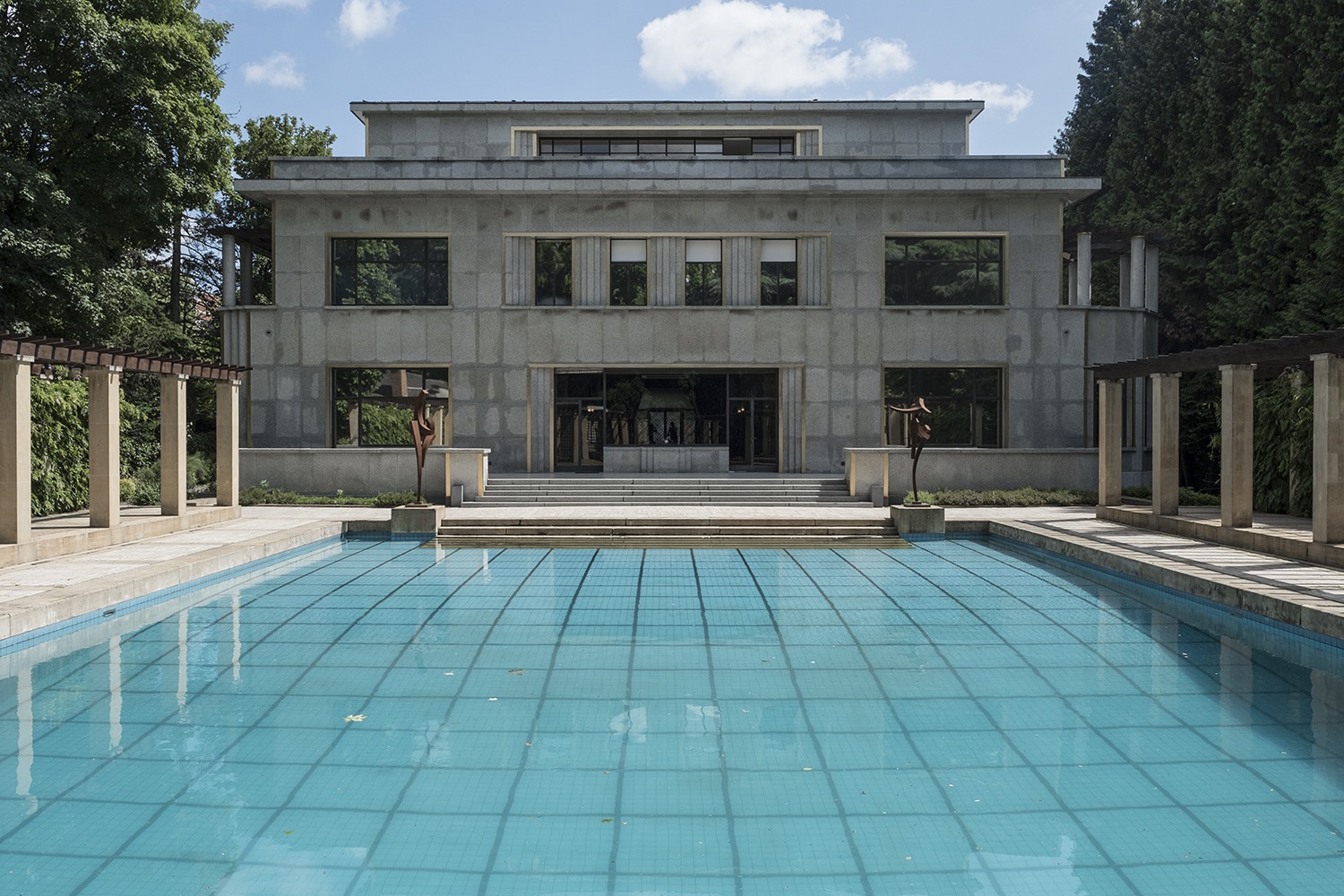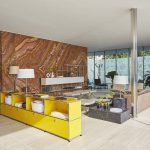The gardener and I greet each other. The leaves that he prunes fall on top of and in between the pebbles. Many times before, he has seen the impressive beauty of Villa Empain: the geometric patterns of the wrought-iron portal, the polished grey granite façades with corners finished in gold leaf. But this Art Deco masterpiece is new to me and as I walk up the stairs, I unsuspectingly enter a time machine on the border between East and West.
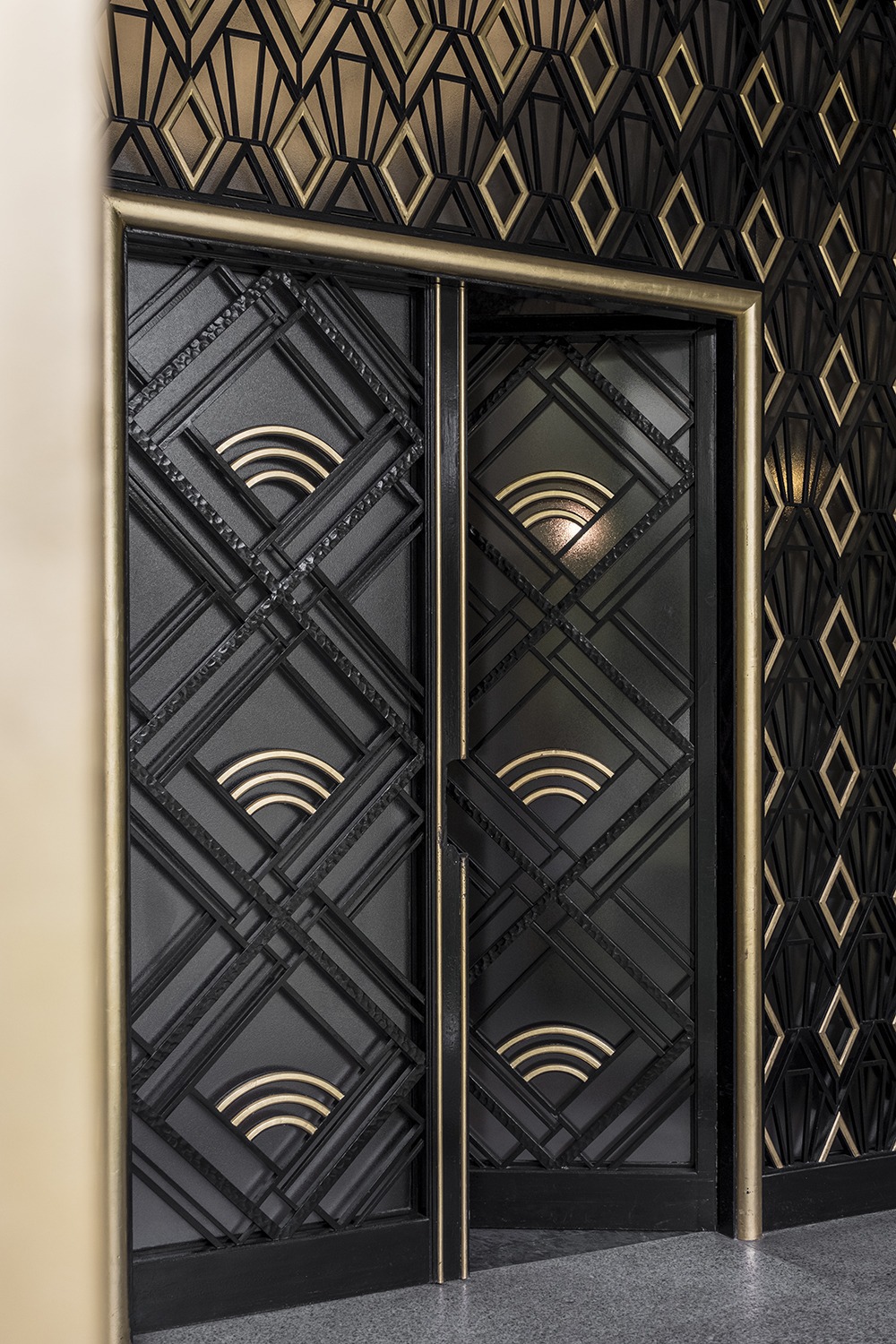
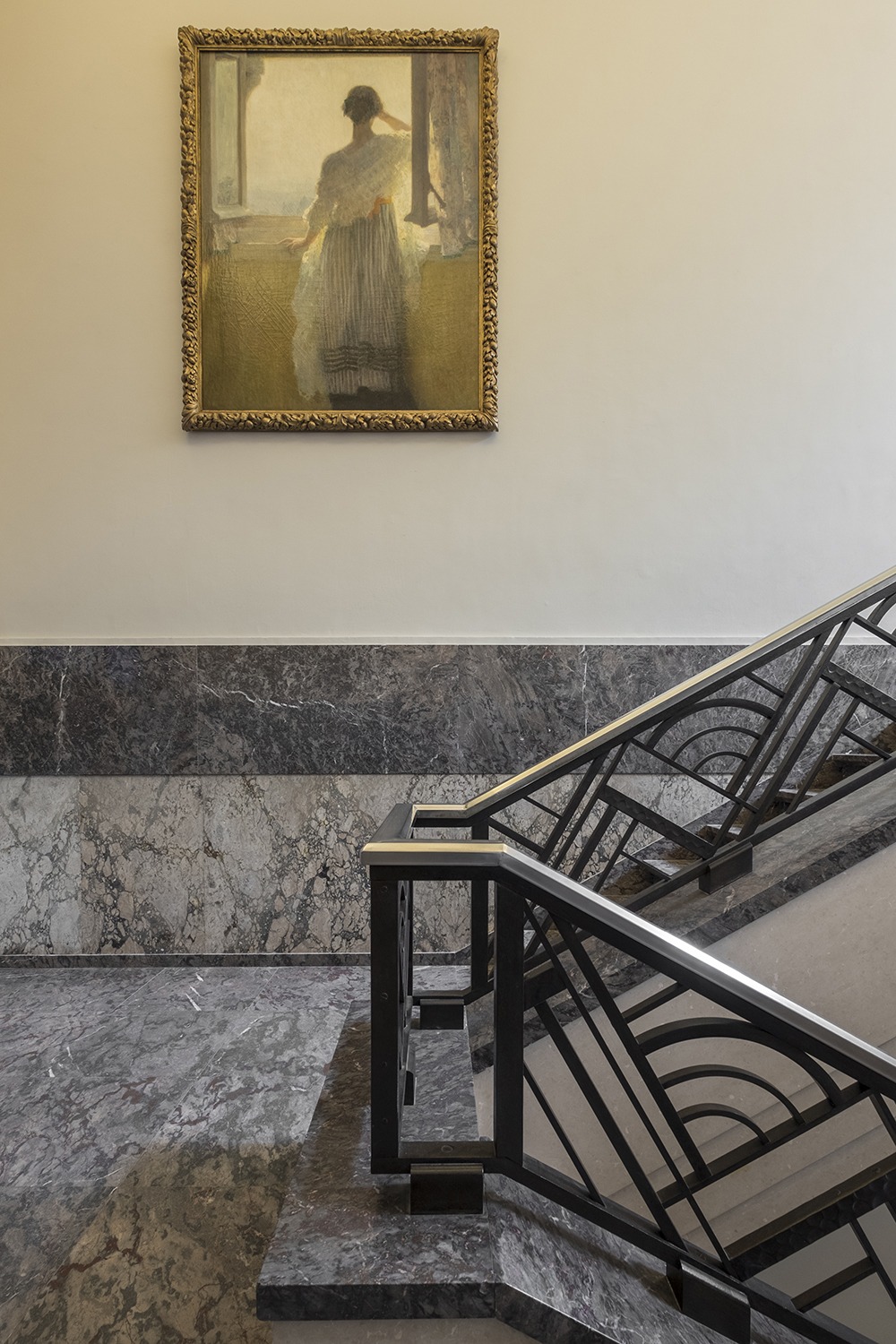
Villa Empain was designed in 1930 by Michel Polak for the 22-year-old Louis Empain. The villa was finished in 1934 and is known as an art deco masterpiece. The chosen materials such as the marble, the exotic woods, the mosaics and stained glass are a testament to its elegance. The tight symmetry and minimal decoration at the same time suggest austerity and discipline. From the upper terrace, where the solarium used to be, I look out at that other eye-catcher: the swimming pool. A pergola with a wisteria roof stands around the horseshoe-shaped bath. In the garden there are some cedars and further on chestnut trees. How is it possible that a 22-year-old guy was able to build this?! Apart from the materials, the style, the art and the eye for detail, it is the history that lends Villa Empain its exceptional character.
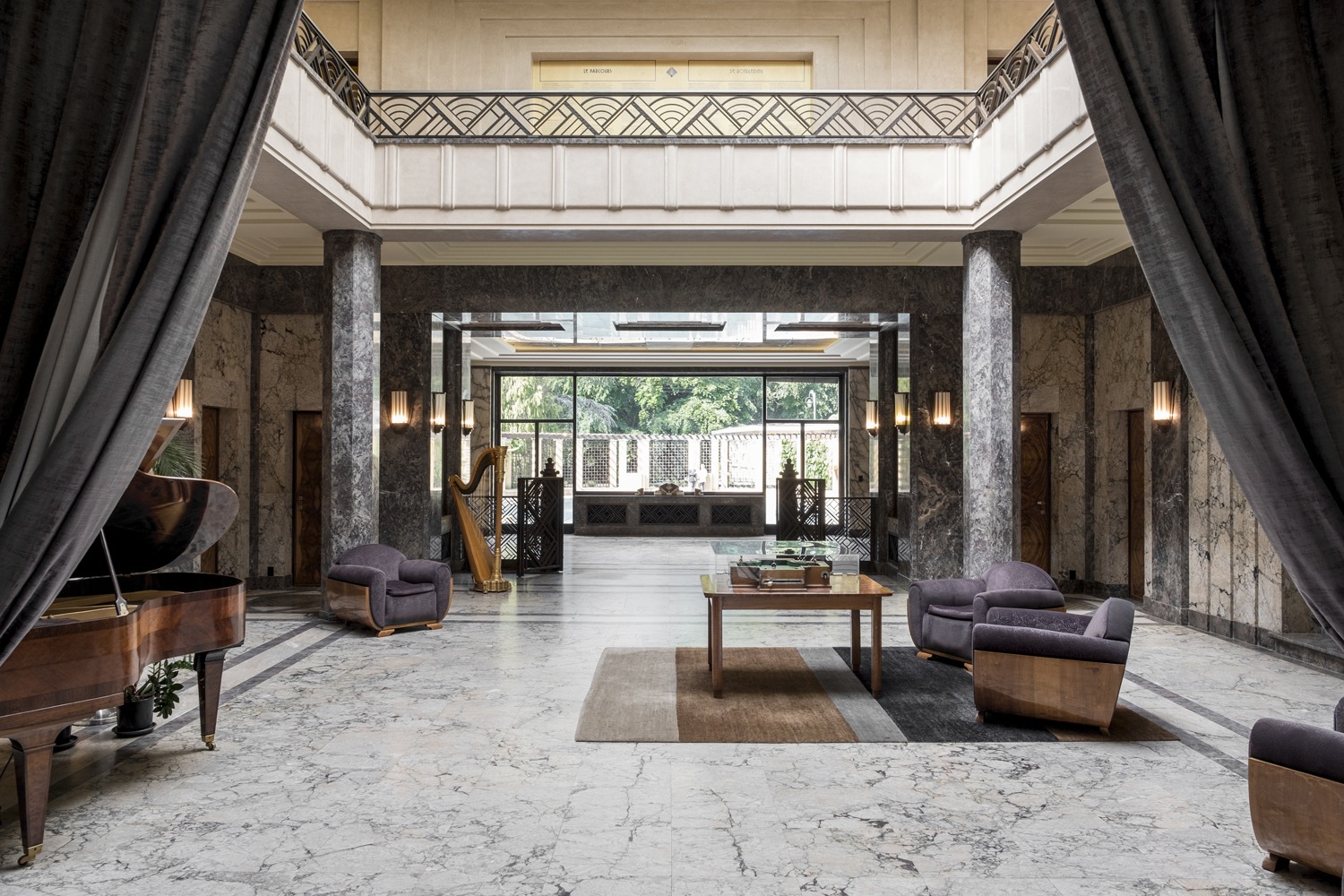
In a nutshell. Louis Empain was the second son of Edouard Empain, who in turn was the son of a teacher. Edouard comes from humble origins but grows out to be one of the wealthiest industrialists of his time. It’s the age of the Second Industrial Revolution, characterized by the invention of the combustion engine and the assembly line, the construction of canals, railways and an electricity network. Edouard is a standard-bearer of the unstoppable modernity.
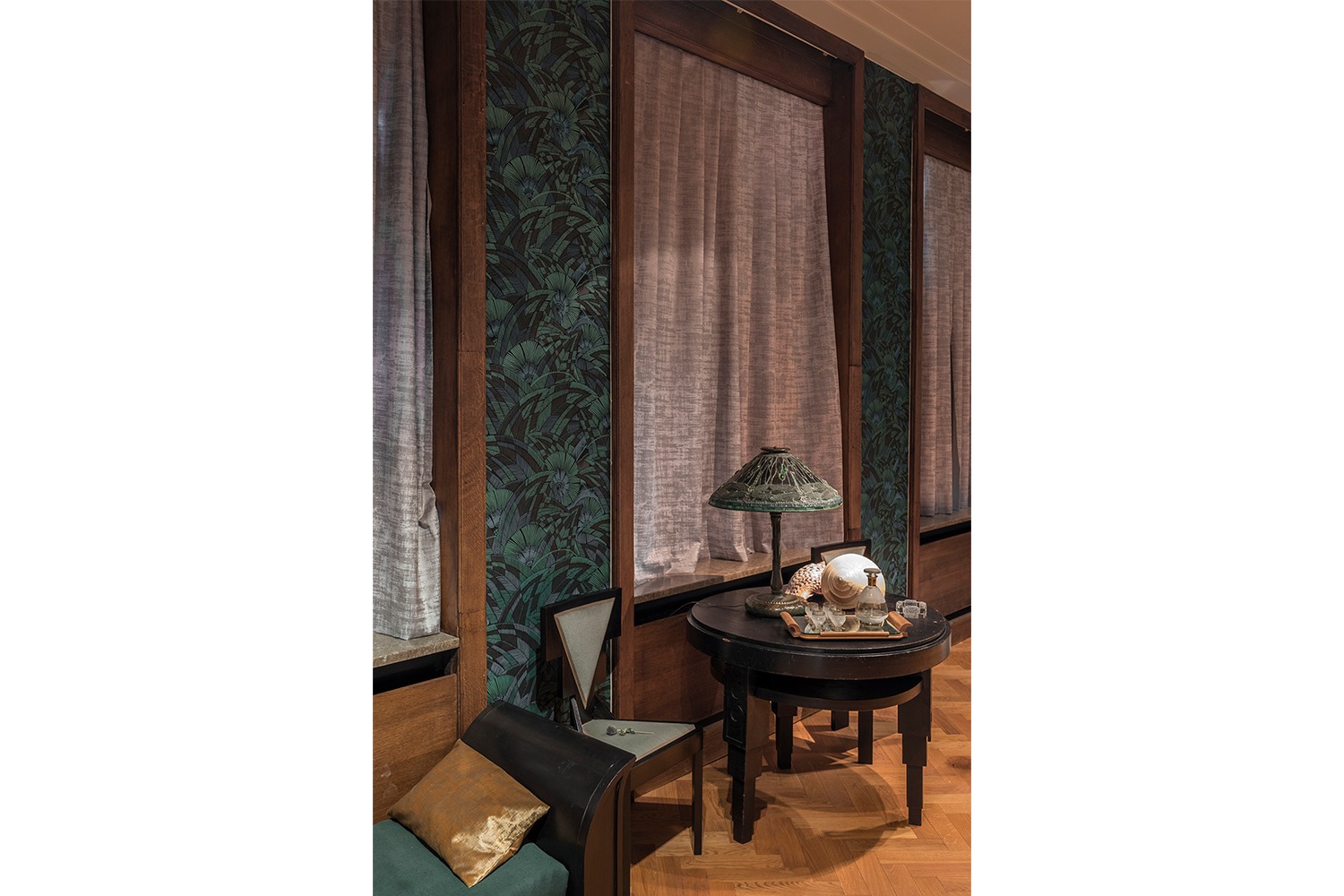
Connection. Edouard connects. He built railways and tram lines in Belgium, France, Cairo, Turkey, China and Congo Free State, the then Belgian colony, where he received concessions from his friend, King Leopold II. He built and owned the Parisian metro, whose art nouveau ornaments are a world-famous attraction still.
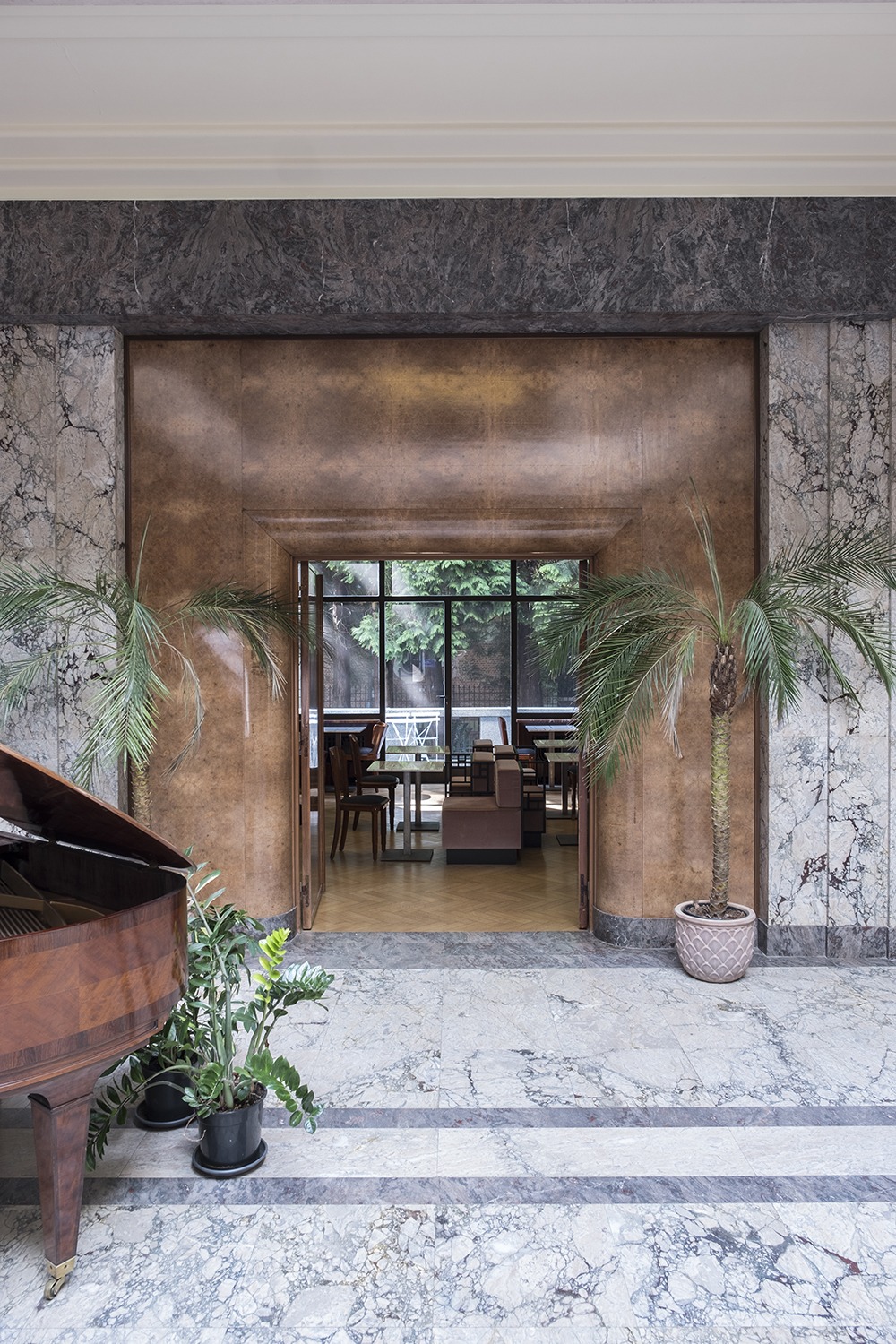
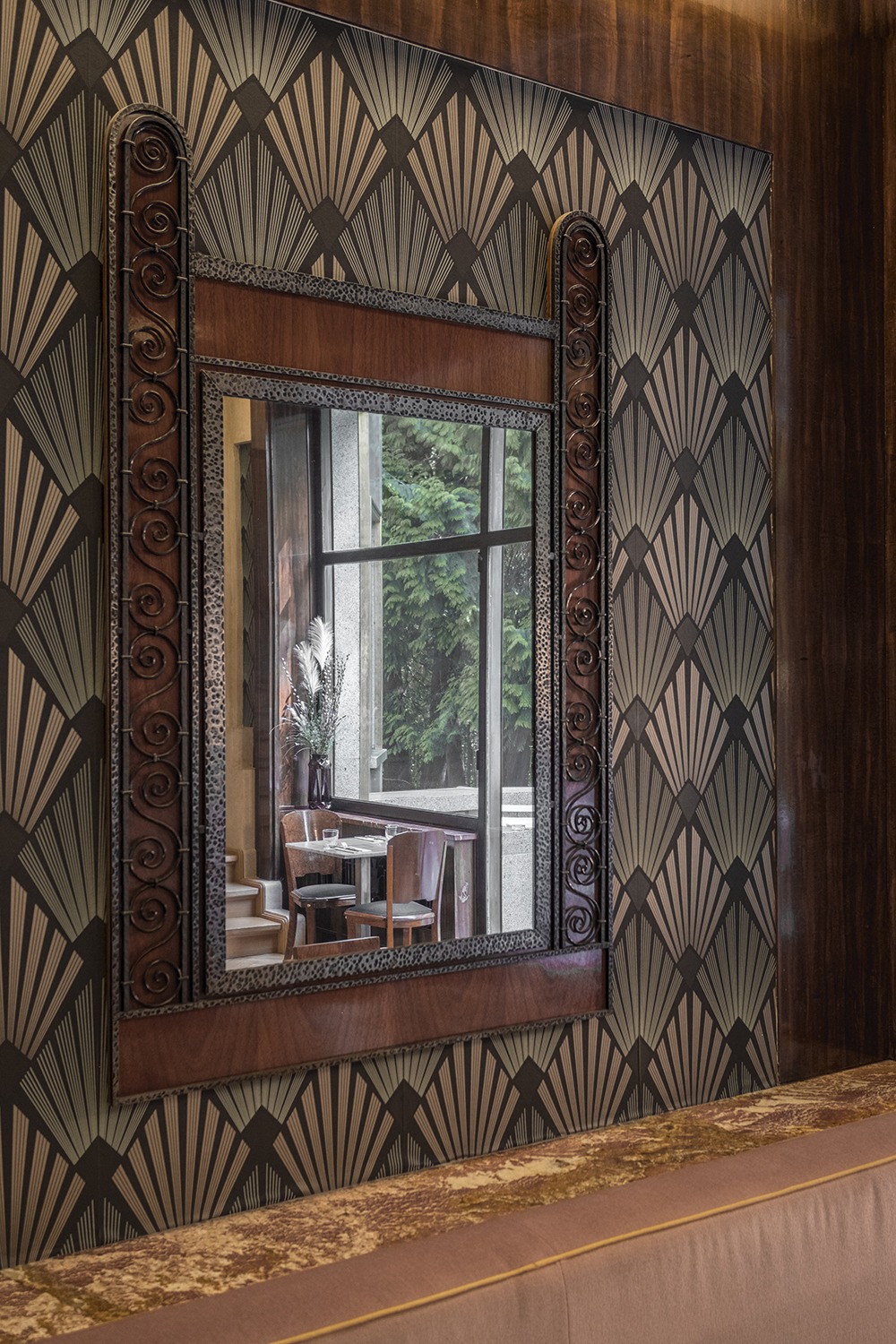
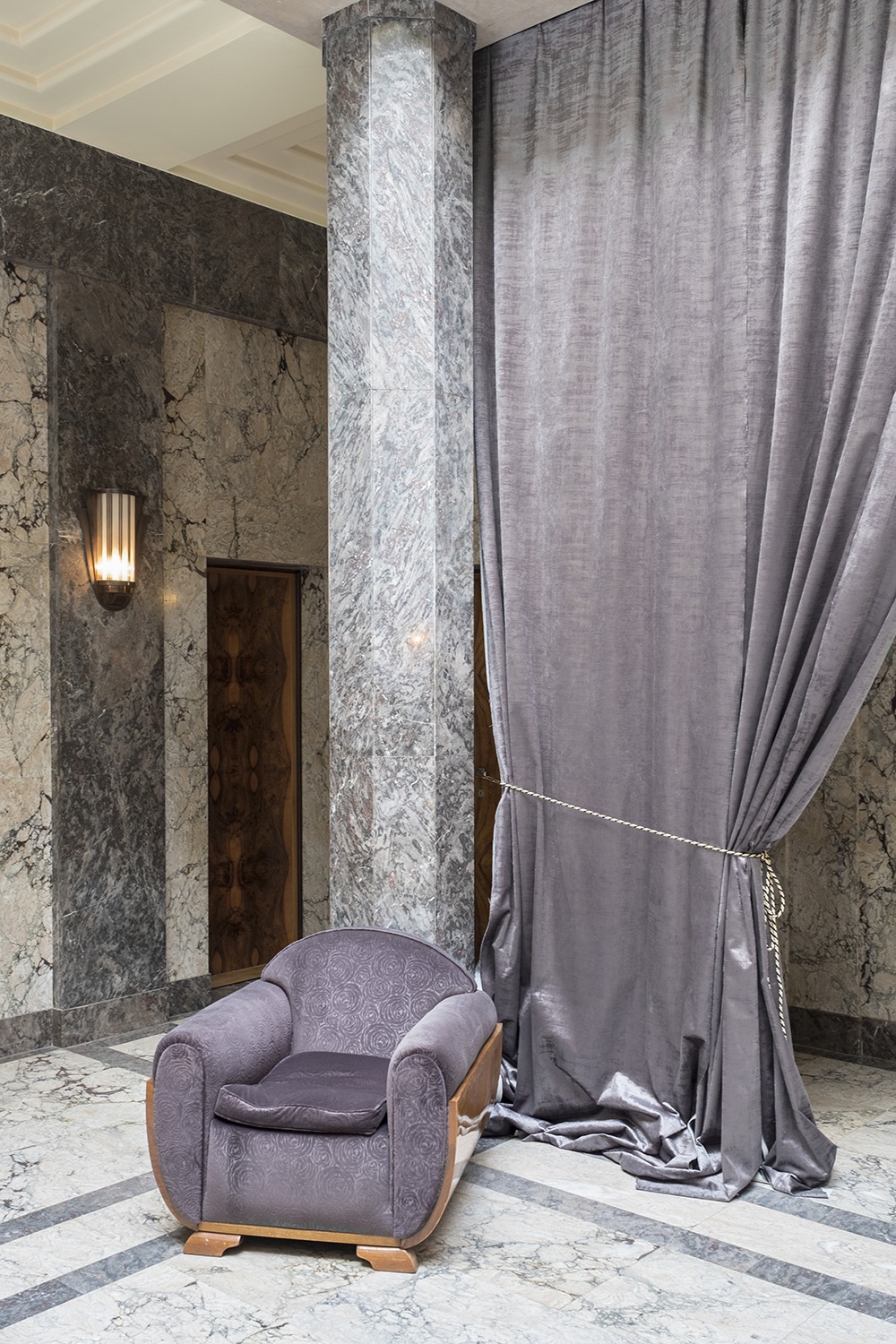
He also built a city in Egypt, inspired by the Belgian seaside town of Ostend: Heliopolis, which has since been annexed as a Cairo neighbourhood. After his death in 1929, family wealth came into the hands of his young sons Jean and Louis. One was a bon vivant, who preferred to spend his time on expensive yachts and in casinos, the other, Louis, was an ascetic and a socialist.
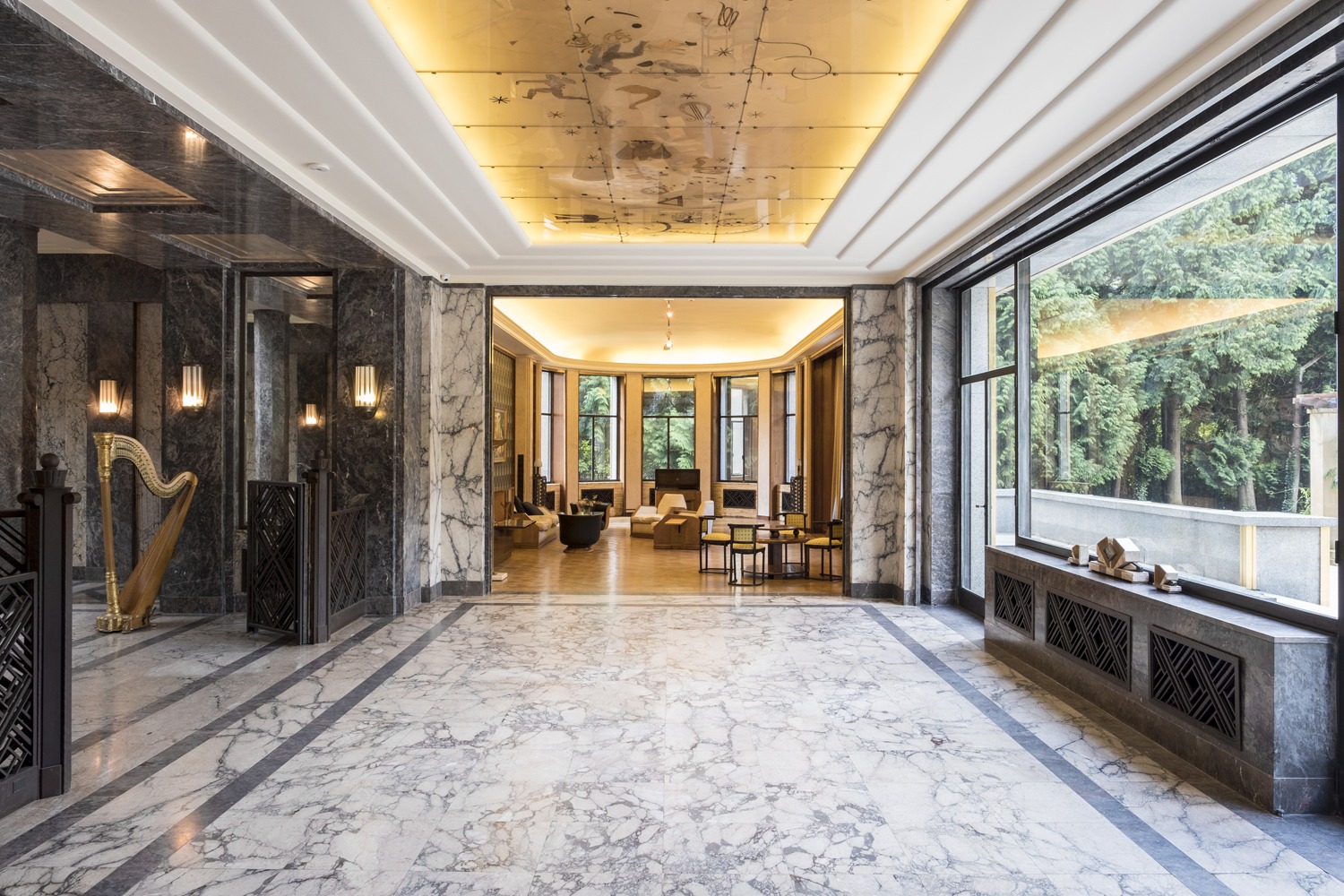
It is therefore somewhat contradictory that Louis had such an amazing villa built, but in reality, he lived there for no more than three years. He donated the building to the Belgian state, who lost it to the German occupiers in 1942. Villa Empain remained in an international political atmosphere after WWII when, against the will of Louis Empain, the Belgian state allowed the USSR to base their embassy there. That decision was withdrawn years later and Empain eventually sold his villa to an Armenian tobacco industry who rented it to the Luxembourg television channel RTL. They placed their antenna in the vacant swimming pool. Waves, still. Then a period of destruction, damage and vandalism followed until the Boghossian Foundation bought the villa in 2006 and completely restored it.
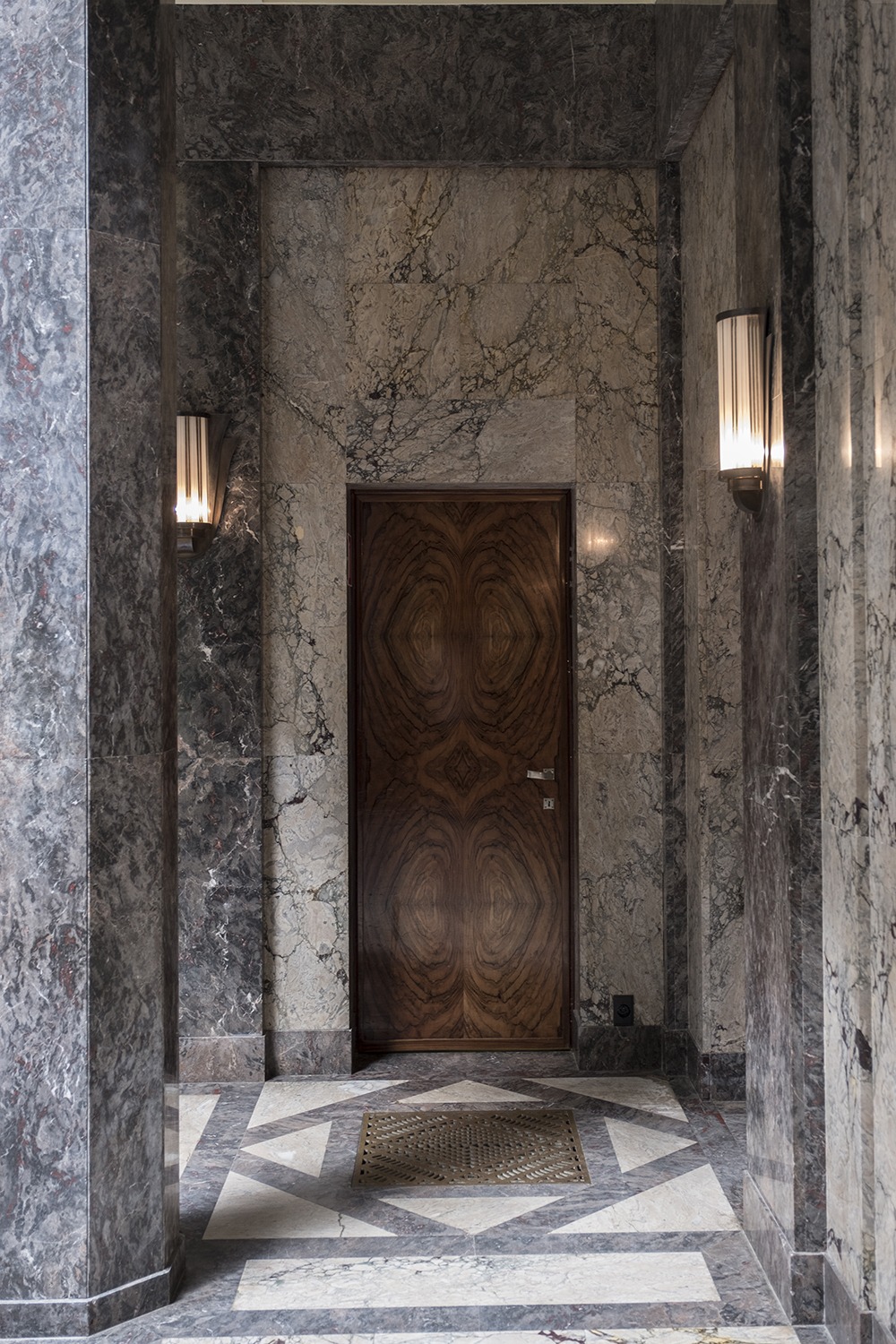
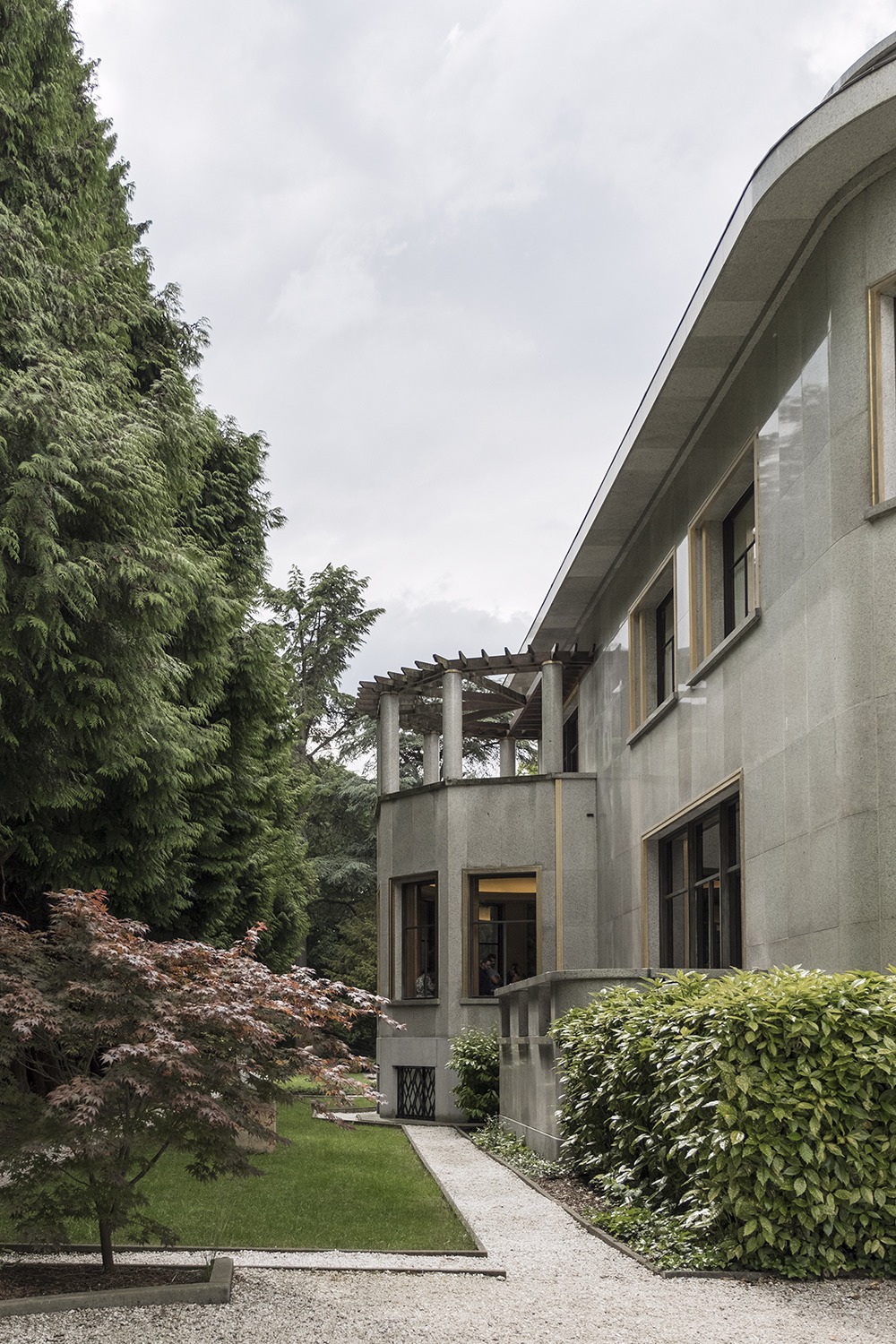
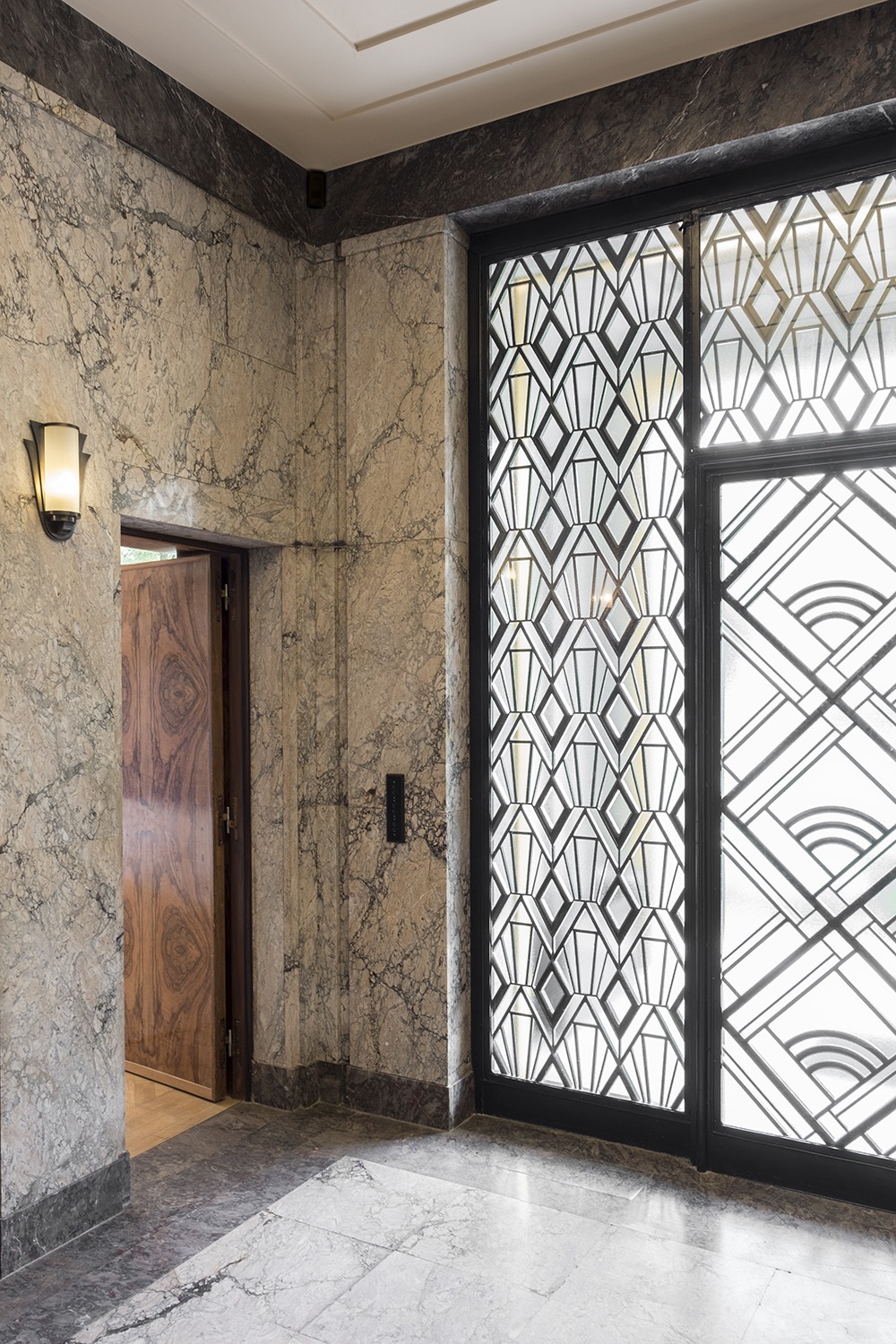
The Boghossian Foundation is the child of Robert Boghossian and his sons Jean and Albert. When Villa Empain opened its doors for the public, it was transformed into an art centre, with an emphasis on the encounter between Eastern and Western cultures. The Boghossians themselves are a family of jewellers who fled their country during the Armenian genocide in 1915. They arrived in Belgium via Syria, Lebanon and Switzerland. They have a very good understanding of what it means to be a refugee. For that reason, the doors of the villa are open and art is shown, a universal language that communicates without borders and weapons. Connection.
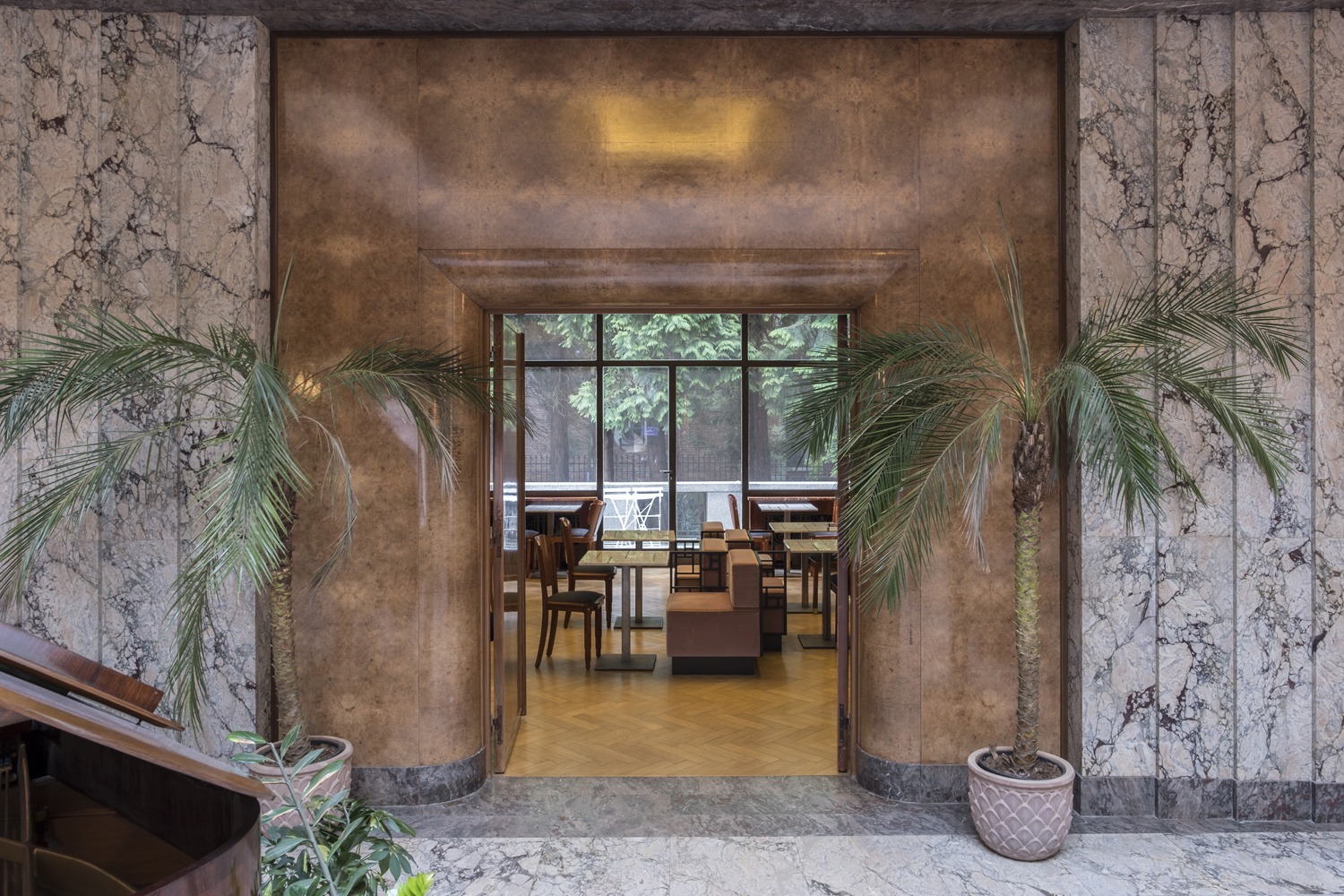
In the former caretaker’s house at the back of the garden, past the swimming pool, are the guest rooms where artists, students and researchers are invited to work. I meet Ruben Malayan, an Armenian calligraphist and draftsman. We talk about the villa and the art deco elements and our conversation meanders to a discussion about the difference between typography and calligraphy. “Art deco and nouveau are an interesting phase in typography. The world changes and the letters change with it.” Ruben is an inspired narrator: “Take Helvetica, which flows from Bauhaus and is about creating a space for the individual to think. None of the letters touch each other.” Every art form is a relationship between form and content. Sometimes there is a fight between the two, sometimes there is harmony. But it always tells you something about the artist’s time and gaze.
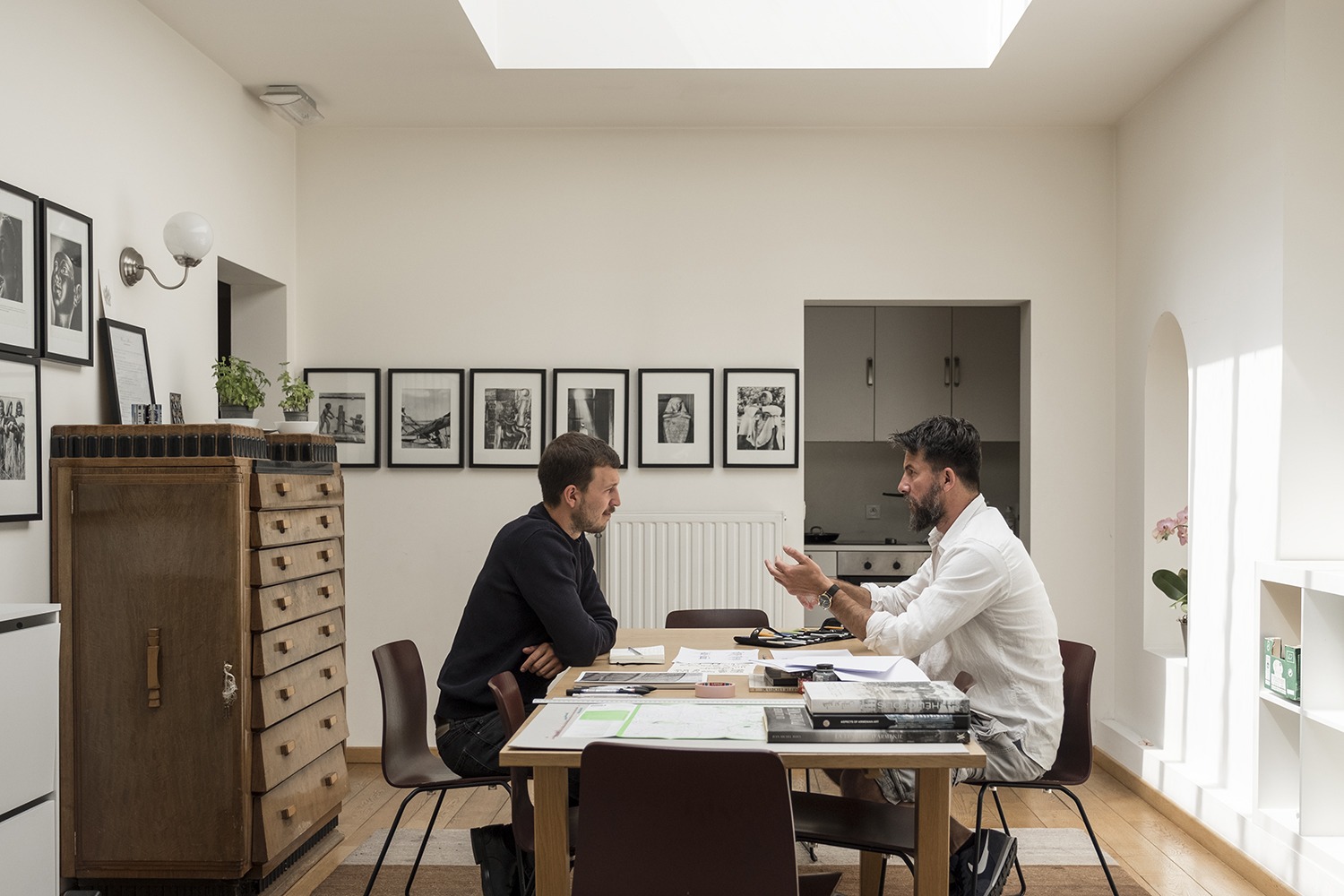
Ruben contrasts the clarity of Roman typographies, which seem to sacrifice form for clarity, with calligraphy: “calligraphy is a sacrifice of clarity for the sake of aesthetics. Handwriting is about connecting shapes and focusing your brain to think in multiple dimensions.” Time, space, feeling. Calligraphy transcends time and transports you back to the moment of writing itself. There is something tangible in it. “Energy penetrates the material”, Ruben explains, as he puts a few pens and various types of paper on the table. He demonstrates how the materials interact with each other. “My father told me never to be afraid of white paper, even though you can’t cover anything, and it is unforgiving. Calligraphy is about this struggle, about friction and materials colliding.”
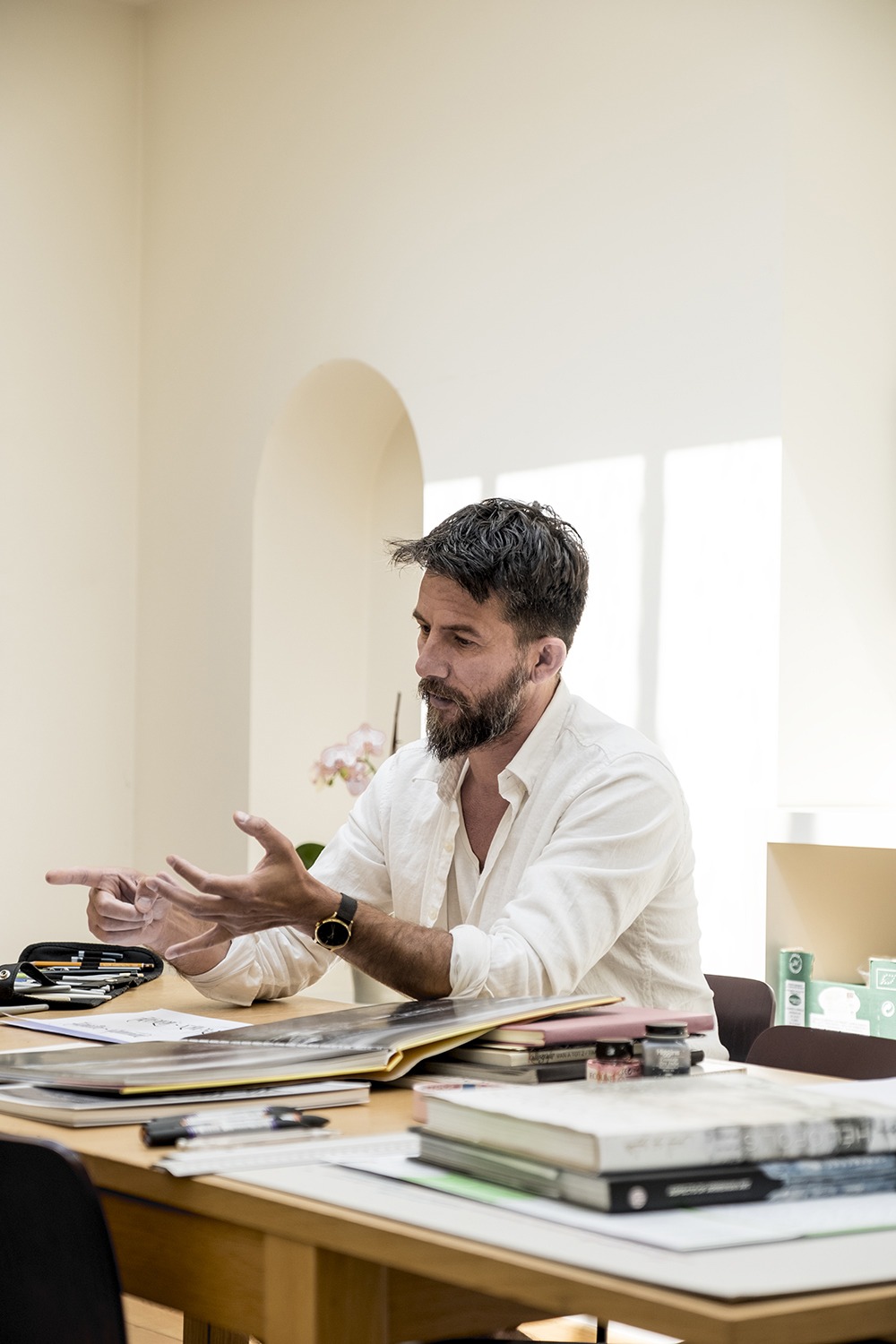

Ruben opens a book on Armenian architecture and speaks passionately about how everything is built in relation to the environment. He leaves the book open on a photo of Dadivank, a medieval Armenian monastery, that houses particular sculpted stone plates. “When I saw them and touched them, I felt I could look through the eyes of the artist but also through those of the art piece itself and see what they and it had seen for centuries. It harbours the memory of our ancestors.” He concludes: “Armenia will always be on the crossroads between East and West. I believe you should know your own culture and then be open.” He lets his pen speak and the black ink on the white paper forms the words “machine à remonter le temps”. Time machine.
